Ad
Articles
Ultimate LED TV Buying Guide: Choosing the Perfect Entertainment Companion
Points Covered in this Article :
12 Minute Read
- Introduction
- Display Technology
- Screen Size
- Smart Feature
- Connectivity Options
- HDR Support
- Conclusion
Introduction:
Welcome to our in-depth guide on purchasing an LED TV! Selecting the ideal television might be a daunting task in the rapidly evolving world of technology today. Making the best choice needs careful thought since there are so many alternatives available, from screen sizes to display technology and smart features. We'll go over the top five things to watch out for when buying an LED TV in this article. Whether you're a gamer, movie fan, or just want to improve your entertainment experience, our buying guide will help you go through the wide selection of LED TVs and choose the ideal one for your house.
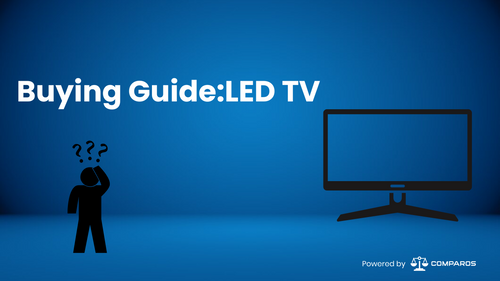
Display Technology:
A few benefits of LED TV's over standard LCD televisions include the use of light-emiting diodes (LEDs) which illuminates the display panel. However, LED TV's use two different types of background lighting technologies namely : Edge-lit LED and Direct-lit LED.
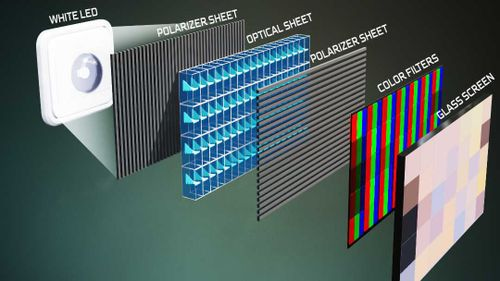
1. Edge-lit LED:
The arrangement of the LEDs in edge-lit LED TVs directs light towards the edge of the display panel. This approach makes sleek and slim designs possible. However, in contrast to TVs that are directly lighted, the light dispersion from the corners may result in less consistent brightness andand at times poor picture quality
2. Direct-lit LED:
Direct LED TVs include an array of LEDs behind the whole presentation screen, allowing for more consistent lighting and noticeable control over brightness levels. In general, this produces superior images with more accurate variety proliferation and a greater difference percentage. Direct-lit Drive TVs are often chosen because of their superior picture, particularly in environments with more glare.
When thinking about Display innovation, it is essential to consider viewpoints such as review points, contrast proportion, and image quality. Picture quality is implied to be the sharpness and detail of the images that are shown on the screen. Look for TVs with high definition (Full HD (1080p), 4K Ultra HD, or 8K for sharper and more useful images.
The Contrast ratio determines the difference in brightness between the darkest and brightest areas of the image. A higher differentiation fraction yields more deep blacks and more dazzling whites, thus enhancing the overall viewing experience.LED TV's generally have large Contast ratios; however, direct-lit LED TV's offer better contrast ratio when compared to edge lit LEDs.
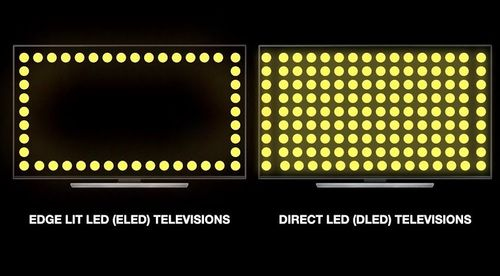
In conclusion, take into account your preferences for image quality (Direct-lit LED) or sleek design and aesthetics (Edge-lit LED) when choosing an LED TV depending on display technology. Assess elements such as contrast ratio, viewing angles, and image quality to guarantee a satisfying and engaging experience customised to your tastes.
Screen Size:
When buying an LED TV, it's important to choose the proper screen size and resolution to provide the best possible viewing experience that suits your tastes and viewing space.
- TV Dimensions: Take into account both your viewing distance and the size of the room where the TV will be positioned when selecting a screen size. A bigger screen may provide for a more engaging watching experience, but in order to prevent eye strain or discomfort, be sure the screen size is appropriate for your viewing distance. To get the optimal viewing distance, generally double the diagonal screen size by 1.5 to 2.5. For instance, it is advised to watch a 55-inch TV at a distance of 6.9 to 11.5 feet.
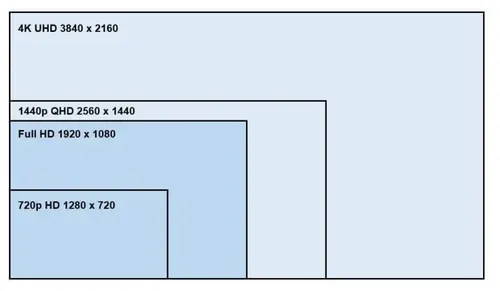
- Resolution: The sharpness and complexity of the visuals on the screen are determined by the TV's resolution. Select a resolution based on your choices and needs:
-
Full HD (1080p): Offers great visual quality for daily viewing, including gaming, watching TV programmes, and movies, and is appropriate for smaller screen sizes.
-
4K Ultra HD: Provides four times the resolution of Full HD, resulting in visuals that are remarkably detailed, crisp, and realistic. Perfect for bigger screens and able to play 4K video from Blu-ray discs, gaming consoles, and streaming services.
-
8K: The highest resolution currently on the market, providing unmatched detail and clarity for an unmatched visual experience. 8K TVs employ sophisticated upscaling technology to improve lower-resolution material to nearly-8K clarity, even though there is still a dearth of 8K content.
When selecting the resolution of your LED TV, take into account your viewing preferences, the material that is available in various resolutions, and your financial constraints. Remember that if the screen size and viewing distance do not call for it, increased resolution does not always translate into better visual quality.
You can make sure that your LED TV suits your unique requirements and preferences for an immersive and joyful watching experience by carefully weighing screen size and resolution.
Smart Feature:
When thinking about an LED TV's smart features, it's important to assess whether the TV has the characteristics that suit your tastes and way of life. Smart TVs improve your entertainment experience by giving you easy access to a multitude of internet resources. Keep an eye out for the following important smart features:
-
Integrated WiFi: Make sure the TV has wifi connection built in so you may connect to your home network. This eliminates the need for extra cables or accessories and allows smooth access to internet streaming services, software upgrades, and other online features.
-
Apps for Streaming: Check if the TV is compatible with well-known streaming applications like Disney+, Hulu, Netflix, and Amazon Prime Video. You may watch your preferred films, TV series, and original material on TV directly without the need for other devices if you have access to a variety of streaming services.
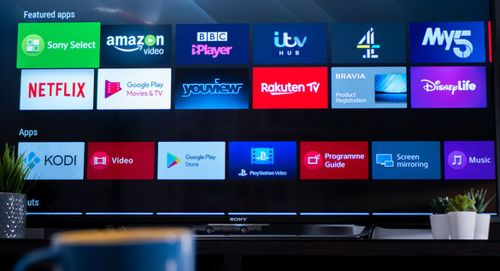
-
App Store: Choose a TV that has a built-in app store or platform that provides access to a wide range of downloadable services and applications. This enables you to add more applications for gaming, news, sports, music, and other entertainment categories to personalise your experience.
-
Voice Control: Take into account whether the TV has voice control features, which enable you to use voice commands to operate compatible smart home devices, browse menus, search for content, and change settings. Accessibility and convenience may be increased with voice control, particularly when paired with virtual assistants like Google Assistant or Amazon Alexa.
-
Casting and Mirroring of the Screen: Check if the TV can cast and mirror material, which will allow you to project anything from your computer, tablet, or smartphone straight onto the TV screen. You may share presentations, movies, images, and other multimedia files with friends and family by using this tool.
-
Navigation and User Interface: Make sure the smart TV's navigation system and user interface are clear, responsive, and simple to use. Having a well-designed user interface makes it easier to access and enjoy your favourite material overall, improving the user experience.
You should make sure that the LED TV you choose provides the ease, adaptability, and usefulness you want for an improved entertainment experience by taking into account these smart TV characteristics. Smart features may enhance your watching experience and turn your TV into a central location for entertainment and connection, whether you're streaming movies, playing games, or surfing the web.
Connectivity Options
It's crucial to check whether an LED TV's connection choices include the ports and interfaces you'll need to connect all of your accessories and devices together flawlessly. The following is a summary of the important connection choices to consider:
- HDMI Ports: Set-top boxes, Blu-ray players, gaming consoles, and other high-definition devices must all be connected to HDMI (High-Definition Multimedia Interface) ports. To fit all of your devices without the need for a separate HDMI switch or splitter, look for a TV with several HDMI connections.
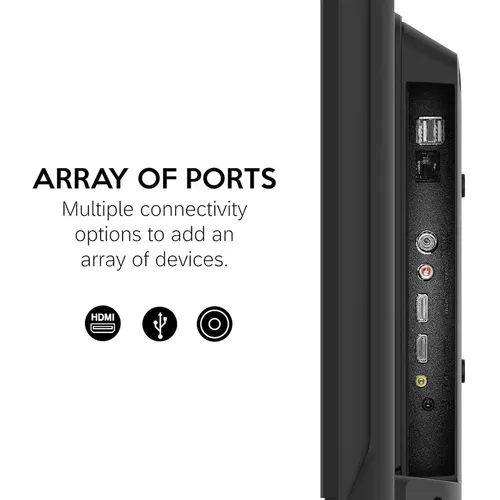
-
USB connections: You may connect USB flash drives, external hard drives, and other USB devices to the TV via USB (Universal Serial Bus) connections. This allows you to instantly access multimedia files from your USB storage devices, including images, movies, and music. Furthermore, you may record live TV shows to a linked USB drive with select TVs that enable USB recording.
-
Port Ethernet: A wired internet connection, which is made possible via an Ethernet connector, offers a dependable and steady connection for online services, software updates, and streaming media. Even though a lot of smart TVs come with built-in Wi-Fi, those who prefer connected connections or have a poor Wi-Fi signal have an additional connection option with an Ethernet connector.
-
Audio Output choices: Take into account the many choices for connecting external audio devices, such home theatre systems, soundbars, and headphones. To fit your preferred audio arrangement, look for features like HDMI ARC (Audio Return Channel), optical audio output, and headphone jack.
-
Connectivity via Wireless: Look for the TV which offers wireless connectivity features like Bluetooth or Wi-Fi Direct in addition to traditional connections. With Bluetooth connection, you may wirelessly mirror your screen or stream music to the TV from compatible devices including tablets, smartphones, and Bluetooth speakers.
A flexible and integrated entertainment setup may be achieved by connecting all of your devices and accessories with ease if the LED TV has a broad variety of connection possibilities. A flawless and pleasurable viewing experience is ensured by having the appropriate connection choices, whether you're gaming, watching films, or listening to music.
HDR Support:
It's essential to take into account if an LED TV supports High Dynamic Range (HDR) technology while evaluating it. An image with HDR has improved contrast and colour accuracy, making for a more vivid, realistic, and engrossing visual experience. Here are some reasons why HDR support matters and what to look for:
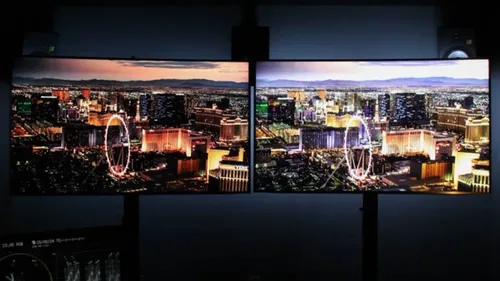
-
Enhanced Contrast: HDR technology produces stronger contrast levels by extending the range between the brightest whites and the deepest blacks. This will result in a more dynamic and lifelike image by allowing you to see more detail in both brilliant highlights and gloomy areas.
-
Vivid Colours: HDR makes it possible for TVs to show a larger spectrum of colours. This produces colours that better capture the tones of the actual world, making them more vivid and saturated. Your favourite films, TV series, and video games will have richer textures and more accurate colours thanks to HDR support.
-
Improved Brightness: HDR-capable TVs are able to display brighter highlights with more intensity as they can reach higher peak brightness levels. As a result, HDR video seems more captivating and powerful, particularly in situations with specular highlights like fireworks against a night sky or sunlight glinting off water.
-
HDR Formats: It's crucial to check for compatibility with well-known HDR formats like HDR10, Dolby Vision, and HLG (Hybrid Log-Gamma) when thinking about HDR support. You may experience a vast selection of HDR material from several sources, such as gaming consoles, Blu-ray discs, and streaming services, thanks to these formats.
-
HDR Performance: Support for HDR is necessary, although its effectiveness varies according on local dimming capabilities, peak brightness, and colour accuracy. To get the most out of HDR content, look for TVs with high peak brightness levels and cutting-edge HDR processing capabilities.
Richer colours, more precise contrast, and breathtaking visual detail will enhance your entertainment experience when you choose an LED TV with HDR capability. Whether you're streaming content, playing video games, or watching movies, HDR technology makes sure that every scene has amazing immersion and realism.
Conclusion:
In summary, it's important to carefully consider a number of factors before making a television purchase to make sure you receive the greatest match for your tastes and entertainment needs. Everything from the innovative display and screen size to the smart feature , and HDR support is important for creating a captivating and engaging viewing experience.

Selecting the right TV guarantees the best possible image quality, and viewing experince, whether it's an Edge-lit or Direct-lit TV. Selecting the appropriate screen size and aim based on your viewing distance and the size of the space also improves the clarity and detail of the visuals on the screen.
TV features that are smart, such as voice control, streaming apps, and built-in Wi-Fi, provide comfort and access to a vast array of online content. Additionally, choices on connectivity such as Ethernet, USB, and HDMI ports influence the ease of coordination with various devices and accessories.
HDR capability enhances the brightness, contrast, and diversity of the picture for a more realistic and unique viewing experience. These items will help you choose a television that best meets your needs and preferences, enabling you to enjoy extended periods of entertainment with unparalleled visual quality and saturation.
Follow Us:
Ad
Recent News

TCL Note A1 Nxtpaper Launched Globally: Check this out!
31-Dec-2025 09:11 AM

Poco M8 5G Confirmed to Launch in India on January 8: Check out the price and specification
30-Dec-2025 12:18 PM
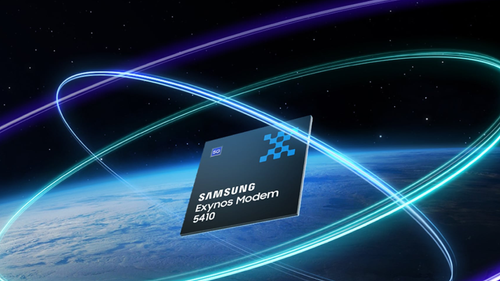
Samsung Galaxy S26 Series Could Debut Advanced Satellite Calling With New Exynos 5410 Modem
30-Dec-2025 06:57 AM

Realme Narzo 90x 5G Goes on Sale in India Today
23-Dec-2025 06:59 AM

Samsung Unveils Exynos 2600, the World's First 2 nm Chipset
19-Dec-2025 06:30 AM
Reviews & Guides
View All

Nothing Phone 3a Community Edition First Impressions: A Fresh Take on Budget Smartphones
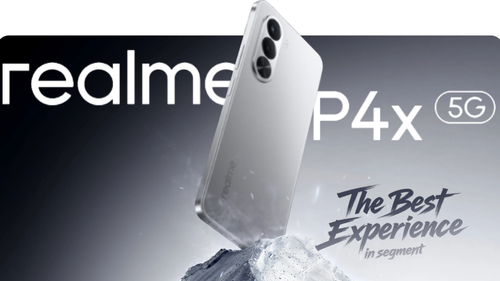
Realme P4x 5G Review: Budget-Friendly Beast with Epic Battery Life

Sony BRAVIA 7 Mini LED K-65XR70 vs. Haier Mini LED H65M95EUX

Samsung QN90F (65QN90FAU) Review: The King of Bright-Room Viewing

Best Philips Air Purifiers in India

Best MSI Gaming Laptops

Best Samsung Phones Under ₹20,000

Best GoPro Cameras in India
Ad
Latest Mobiles In India
Ad
Ad












